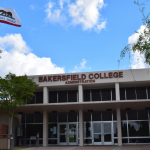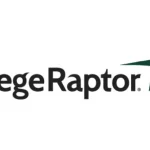The pandemic has created a unique urgency to make investments in the sort of modern communications and virtual engagement tools that have been embraced across other industries (and which students are clamoring for) but were slow to be adopted across higher education. These technologies can extend the reach of human staff and provide a highly engaging student experience.
Even before the pandemic, there was growing awareness that colleges and universities needed to embrace modern communication technologies. But the pandemic exposed just how reliant colleges and universities have been on legacy communication channels such as email, as well as other dated platforms and solutions that do not share information with other campus-wide technology and systems.
Recently, The Chronicle of Higher Education wrote: “Colleges nationwide are increasingly adopting artificial-intelligence tools such as chatbots to expand and streamline communication. … They offer compelling benefits. These tools can field common queries so staff can focus on more personal or complex questions.”
Needless to say, it is an exciting time for AI technology in higher education. Chatbots themselves are just beginning to scratch the surface of their potential – and when integrated with other systems, they are unleashing even greater value and opportunities.
The Broad (and Urgent) Case for AI in Higher Education
The University of California Presidential Working Group on AI summarized the case for AI in an October 2021 statement: “When resources are limited, AI can assist, supplement, or accelerate human review and decision-making, and complement efforts by advising and counseling staff often stretched thin to serve students adequately. This automation can provide efficiencies that improve performance metrics of students, faculty, and staff alike.”
At Ocelot, we have observed several key learnings as we have deployed our AI platform at nearly 500 colleges and universities:
- Overburdened staff is often reactive to repetitive, low-impact questions rather than providing proactive support and guidance that impact student outcomes.
- Legacy service channels do not effectively reach today’s students whether they are Gen Z or adult learners.
- Institutional data is often siloed in multiple systems, and not fully utilized for predictive decision-making and optimal workflows.
- Legacy technologies often lack a modern interface that can reach students on their mobile devices, drive immediate and timely engagement and provide 24/7 virtual support.
An AI Platform That is Easy-to-Deploy
We often hear from colleges and universities that they want this type of technology. However, there can be roadblocks to making it happen, a few of which include:
- IT staff has limited bandwidth to launch new technology
- There are a number of IT projects already in motion
- Concerns about ongoing maintenance and support
Given these challenges, we have approached our AI platform with a mind toward building something that is both easy-to-deploy and sustainable.
Our AI platform supports chatbot, live chat and two-way SMS texting. We have built our platform using a multi-tenant system. This enables all of our clients to benefit as technological advances and newer AI models are added to our underlying platform. These advancements are pushed out to all chatbots that are part of the multi-tenant system. Institutions receive these benefits without having to worry about maintaining and upgrading the underlying technology.
The multi-tenant approach also supports a quick launch, as well as a strong “Day 1” experience with minimal effort from the institution. Even more importantly, little effort is needed for ongoing maintenance and support. That burden is handled by Ocelot.
An AI Platform That Elevates the Entire Tech Stack
In addition to being multi-tenant, we have also taken a “system agnostic” approach at Ocelot. That means that our platform has been intentionally architected to support an “open API” framework, as well as pre-built, configurable integrations for major systems, plus the minor ones that support a similar open framework. There are a number of advantages to this approach:
- Integrations are much simpler, less time consuming and more flexible.
- Your institution retains the AI learnings. You want the AI to be portable. Your AI gets smarter and smarter every day. You do not want to lose all the learning that has taken place if you switch SIS or CRM platforms.
- Create a more seamless digital experience for students and parents. A system agnostic platform that accesses data from the CRM, SIS, LMS, FAMS and ticketing systems will provide students a consistent experience. This is far better than using multiple bots from various systems. Multiple bots are a recipe for confusion for students, especially underserved, first generation students who don’t have experience navigating complex enterprise systems.
- Drive even greater ROI from your major systems. If you, for example, use SalesForce or Slate for your CRM, or PeopleSoft, Banner, Colleague, Jenzabar or Anthology for your SIS, or Regent Education for your FAMS, you are best served by AI that can access the data from whichever one(s) you use today.
The Wrap
We believe that a multi-tenant and system agnostic AI platform is likely, over time, to emerge as “best of breed” AI provider for higher education. It is easy-to-deploy and can elevate the entire tech stack significantly. We are relentlessly investing in our AI technology and improving it. Over time, we believe this will disrupt legacy processes and systems (for the better), reducing friction that too often gets in the way of student success. Ultimately, we believe this approach is the one that will support the entire student journey and have the greatest impact on success.















